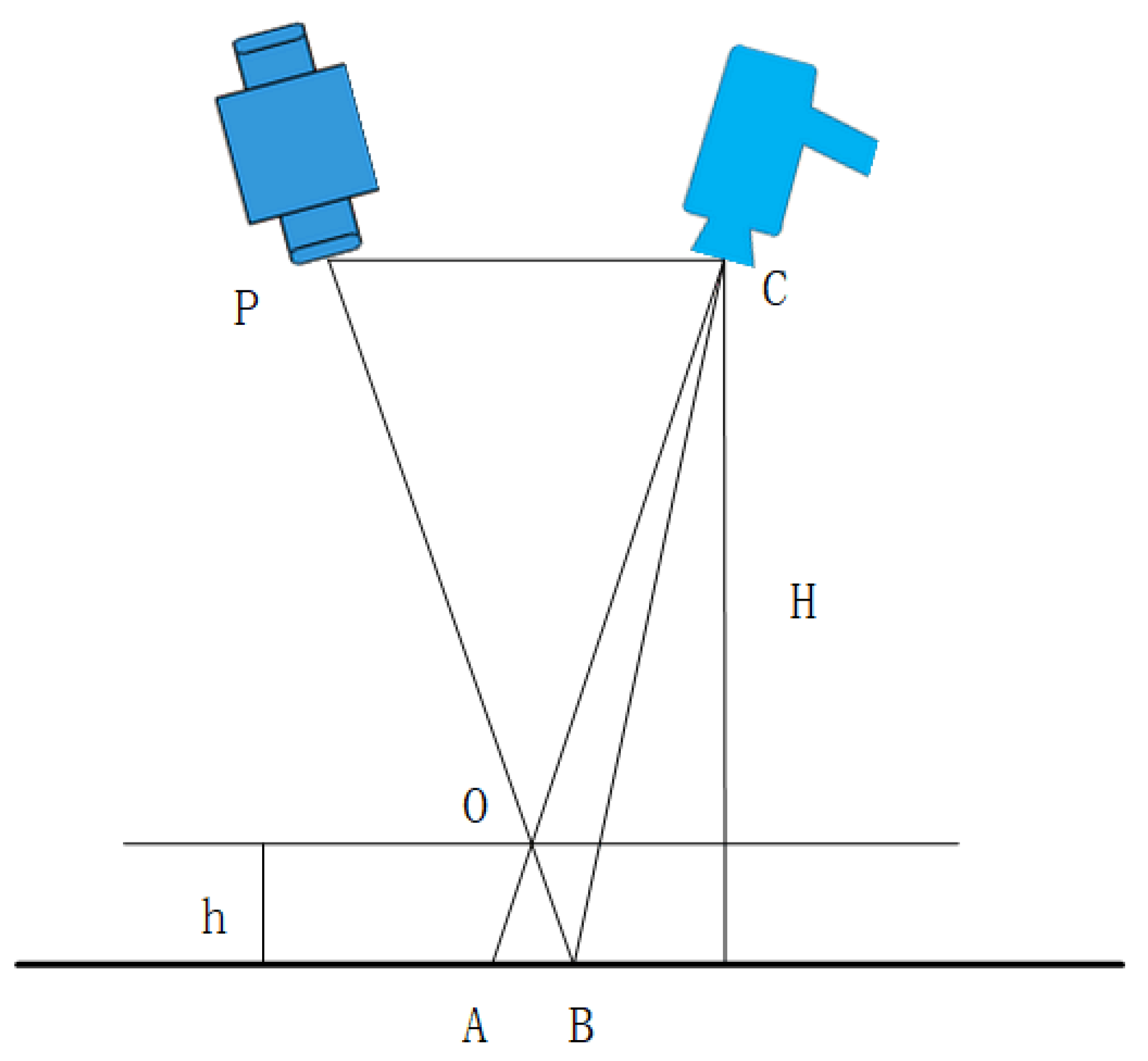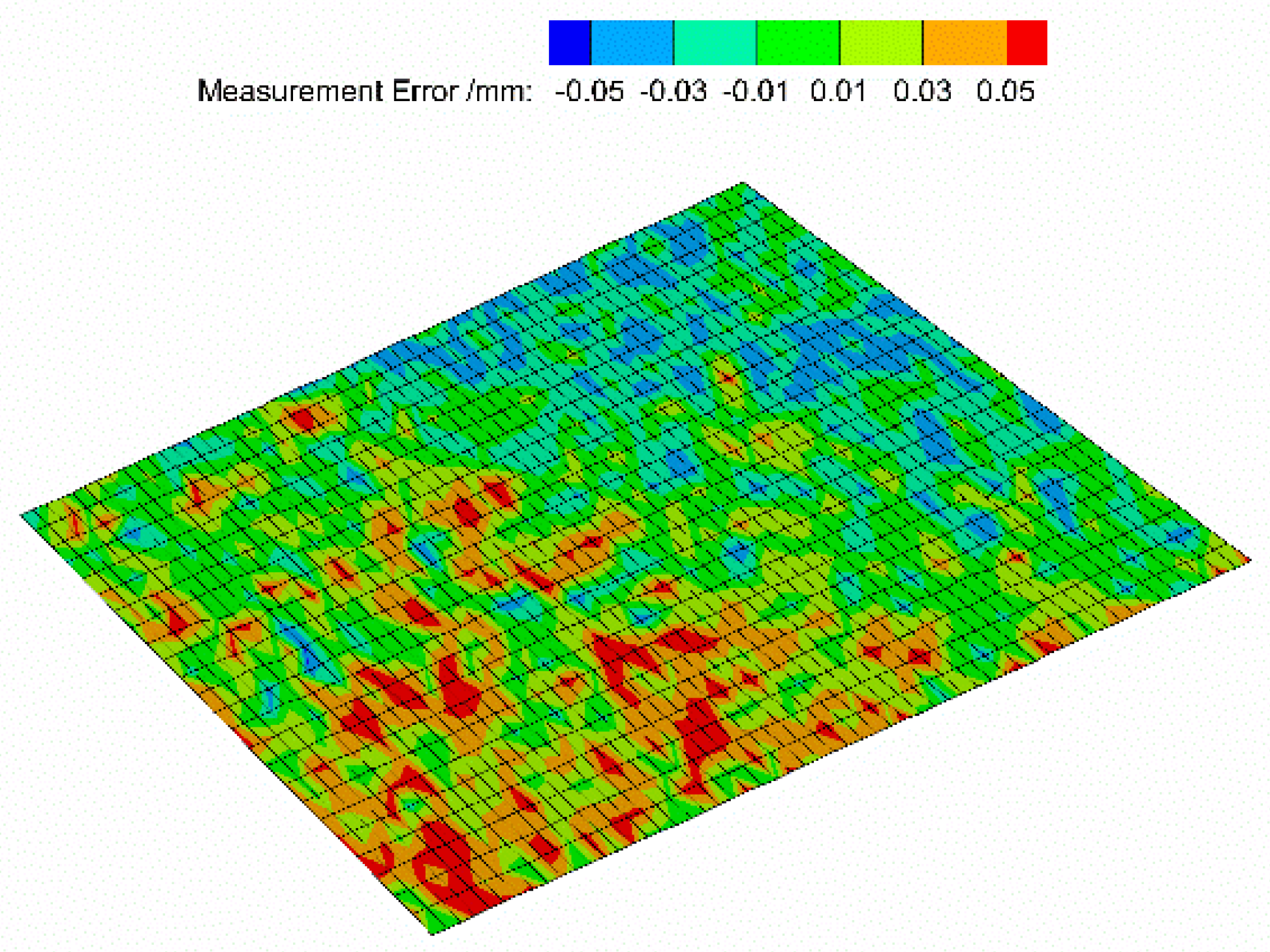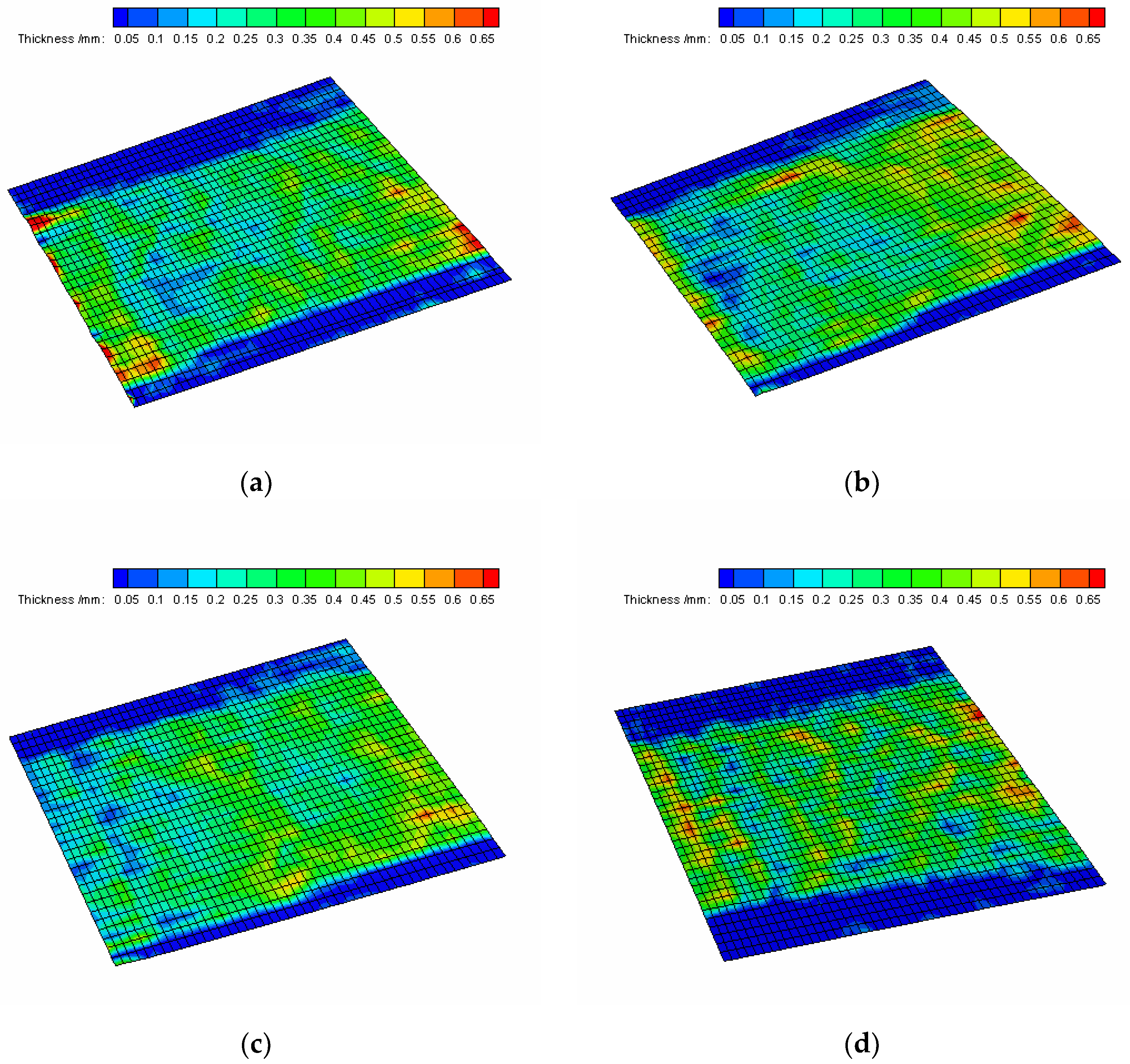Experimental Research on the Influence of Roughness on Water Film Flow
Abstract
:1. Introduction
2. Experimental Apparatus and Methods
2.1. Experimental System
2.2. Measurement Principle of DIP System
2.3. Experiment Bench Calibration and Measurement
2.4. Rough Experimental Plate Setup
3. Results and Analysis
3.1. Water Film Measurement Processing Method
3.2. Water Film Flow Equation
3.3. Effect of Roughness on Water Film Flow
4. Conclusions
Author Contributions
Funding
Institutional Review Board Statement
Informed Consent Statement
Data Availability Statement
Conflicts of Interest
References
- Parent, O.; Ilinca, A. Anti-icing and De-icing Techniques for Wind turbines: Critical Review. Cold Reg. Sci. Technol. 2010, 65, 88–96. [Google Scholar] [CrossRef]
- Gent, R.W.; Dart, N.P.; Cansdale, J.T. Aircraft Icing. Philos. Trans. R. Soc. A Math. Phys. Eng. Sci. 2000, 358, 2873–2911. [Google Scholar] [CrossRef]
- Holl, M.; Patek, Z.; Smrcek, L. Wind Tunnel Testing of Performance Degradation of Ice Contaminated Airfoils. In Proceedings of the 22nd International Congress of Aeronautical Sciences, Harrogate, UK, 27 August–1 September 2000. [Google Scholar]
- Otta, S.P.; Rothmayer, A.P. Instability of Stagnation Line Icing. Comput. Fluids 2009, 38, 273–283. [Google Scholar] [CrossRef]
- Du, Y.; Gui, Y.; Xiao, C.; Xian, Y. Investigation on heat transfer characteristics of aircraft icing including runback water. Int. J. Heat Mass Transf. 2010, 53, 3702–3707. [Google Scholar]
- Zhang, X.; Wu, X.; Min, J. Aircraft icing model considering both rime ice property variability and runback water effect. Int. J. Heat Mass Transf. 2017, 104, 510–516. [Google Scholar] [CrossRef]
- Rothmayer, A.P.; Matheis, B.D.; Timoshin, S.N. Thin Liquid Films Flowing Over External Aerodynamics Surfaces. J. Eng. Math. 2002, 42, 341–357. [Google Scholar] [CrossRef]
- Rothmayer, A.P.; Hu, H. Linearized Solutions of Three-Dimensional Condensed Layer Films. In Proceedings of the 5th AIAA Atmospheric and Space Environments Conference, AIAA, San Diego, CA, USA, 24 June 2013. [Google Scholar]
- Wang, G.; Rothmayer, A.P. Thin Water Films Driven by Air Shear Stress through Roughness. Comput. Fluid 2009, 38, 235–246. [Google Scholar] [CrossRef]
- Shin, J.; Berkowitz, B. Prediction of Ice Shapes and Their Effect on Airfoil Drag. J. Aircr. 1994, 31, 263–270. [Google Scholar] [CrossRef]
- Wang, G. Thin Water Films Driven by Air through Surface Roughness. Ph.D. Thesis, Iowa State University, Ames, IA, USA, 2008. [Google Scholar]
- Wang, G.; Rothmayer, A.P. Air Driven Water Flow Past Small Scale Roughness. In Proceedings of the 43rd AIAA Aerospace Sciences Meeting and Exhibit, Reno, Nevada, 10 January–13 January 2005. [Google Scholar]
- Zhang, K.; Blake, J.; Alric, R.; Hu, H. An Experimental Investigation on Wind-Driven Rivulet/Film Flows over a NACA0012 Airfoil by Using Digital Image Projection Technique. In Proceedings of the 52nd Aerospace Sciences Meeting, AIAA, National Harbor, MD, USA, 13–17 January 2014. [Google Scholar]
- Cherdantsev, A.V.; Hann, D.B.; Azzopardi, B.J. Study of Gas-Sheared Liquid Film in Horizontal Rectangular Duct Using High-Speed LIF Technique: Three-Dimensional Wavy Structure and Its Relation to Liquid Entrainment. Int. J. Multiph. Flow 2014, 67, 52–64. [Google Scholar] [CrossRef]
- Zhang, K.; Zhang, S.; Rothmayer, A.P.; Hu, H. Development of a Digital Image Projection Technique to Measure Wind-Driven Water Film Flows. In Proceedings of the 51st AIAA Aerospace SCIENCES Meeting, Grapevine, TX, USA, 7–10 January 2013. [Google Scholar]
- Zhang, K.; Wei, T.; Hu, H. An Experimental Investigation on the Surface Water Transport Process over an Airfoil by Using a Digital Image Projection Technique. Exp. Fluids 2015, 56, 1–16. [Google Scholar] [CrossRef]
- Zhang, K.; Rothmayer, A.P.; Hu, H. An Experimental Study of Wind-Driven Water Film Flows over Roughness Array. In Proceedings of the 6th AIAA Atmospheric and Space Environments Conference, Atlanta, GA, USA, 16–20 June 2014. [Google Scholar]
- Chang, S.; Yu, W.; Song, M.; Leng, M.; Shi, Q. Investigation on Wavy Characteristics of Shear-Driven Water Film Using the Planar Laser Induced Fluorescence Method. Int. J. Multiph. Flow 2019, 118, 242–253. [Google Scholar]
- Leng, M.; Chang, S.; Wu, H. Experimental Investigation of Shear-Driven Water Film Flows on Horizontal Metal Plate. Exp. Therm. Fluid Sci. 2018, 94, 134–147. [Google Scholar] [CrossRef] [Green Version]
- Myers, T.G.; Thompson, C.P. Modeling the Flow of Water on Aircraft in Icing Conditions. AIAA J. 1998, 36, 1010–1013. [Google Scholar] [CrossRef]
- Myers, T.G.; Charpin, J.P.; Thompson, C.P. Slowly Accreting Ice Due to Supercooled Water Impacting on a Cold Surface. Phys. Fluids 2002, 14, 240. [Google Scholar] [CrossRef]







| Number | Ra/μm | Rz/μm |
|---|---|---|
| 1 | 2.8 | 20.6 |
| 2 | 3.3 | 23.7 |
| 3 | 8.7 | 62.3 |
| 4 | 13.9 | 85.3 |
| Rz/μm | Function |
|---|---|
| 20.6 | |
| 23.7 | |
| 62.3 | |
| 85.3 |
Publisher’s Note: MDPI stays neutral with regard to jurisdictional claims in published maps and institutional affiliations. |
© 2021 by the authors. Licensee MDPI, Basel, Switzerland. This article is an open access article distributed under the terms and conditions of the Creative Commons Attribution (CC BY) license (https://creativecommons.org/licenses/by/4.0/).
Share and Cite
Zhao, H.; Zhu, C.; Zhao, N.; Zhu, C.; Wang, Z. Experimental Research on the Influence of Roughness on Water Film Flow. Aerospace 2021, 8, 225. https://doi.org/10.3390/aerospace8080225
Zhao H, Zhu C, Zhao N, Zhu C, Wang Z. Experimental Research on the Influence of Roughness on Water Film Flow. Aerospace. 2021; 8(8):225. https://doi.org/10.3390/aerospace8080225
Chicago/Turabian StyleZhao, Huanyu, Chunling Zhu, Ning Zhao, Chengxiang Zhu, and Zhengzhi Wang. 2021. "Experimental Research on the Influence of Roughness on Water Film Flow" Aerospace 8, no. 8: 225. https://doi.org/10.3390/aerospace8080225
APA StyleZhao, H., Zhu, C., Zhao, N., Zhu, C., & Wang, Z. (2021). Experimental Research on the Influence of Roughness on Water Film Flow. Aerospace, 8(8), 225. https://doi.org/10.3390/aerospace8080225








